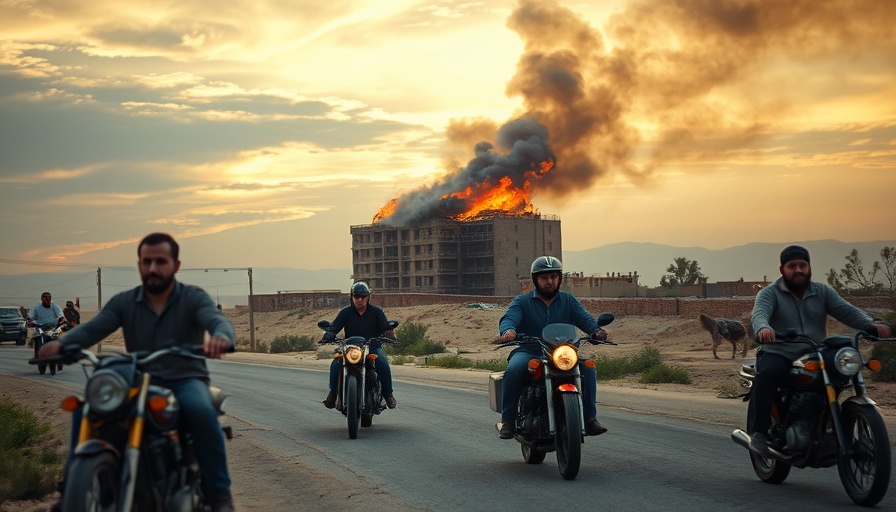
Escalating Violence in Syria's Druze Region: A Critical Overview
In recent days, the Druze region of Sweida in southern Syria has experienced a surge of violence, characterized by sectarian clashes and heavy weapons fire. This escalation comes at a time when the Syrian government, led by interim President Ahmed al-Sharaa, finds itself grappling with the challenges of maintaining a ceasefire and restoring peace amid ongoing bloodshed.
Witness reports in Sweida describe horrifying scenes of gunfire and mortar shelling, echoing through the city and surrounding villages, leaving the local population in fear for their safety and well-being. The Syrian Observatory for Human Rights, a prominent monitoring organization, estimates that nearly 940 individuals have died as a result of the violence since the conflict reignited a week prior. These staggering figures underline the urgent need for effective conflict resolution in the region.
The Role of Sectarian Dynamics in the Conflict
The ongoing conflict is driven not only by political issues but also by deep-rooted sectarian tensions. The Druze community, known for its unique religious beliefs that distinguish them from Syria’s Sunni Muslim majority, has historically faced systemic discrimination. This has fueled a sense of disenfranchisement among the Druze people, making the region susceptible to violence amid broader national unrest.
In the wake of the recent clashes, Sharaa's government has called for the immediate cessation of hostilities and deployed security forces to restore order. However, the government's efforts have met ongoing resistance, raising doubts about its effectiveness and intentions amid external pressures, particularly accusations of Israeli airstrikes undermining peace efforts.
International Dynamics Affecting Domestic Stability
As the conflict rages on, the complexities of international relations cast a long shadow over Syria's attempts to implement a ceasefire. The interim government highlights efforts of international mediation from both Arab nations and the United States, yet it remains clear that these external influences are entangled with the existing sectarian and political strife. Such entanglements complicate the ceasefire process, showcasing the challenges faced by Sharaa as he navigates a contentious political landscape.
The recent airstrikes attributed to Israel, ostensibly aimed at Iranian targets in Syria, have further exacerbated tensions. Sharaa has criticized these actions, implying that they represent an outside threat to Syria's stability and peace-building efforts. The role of international actors in Syrian affairs complicates potential resolutions, illustrating how global geopolitics can inadvertently complicate domestic issues.
Potential Pathways Toward Stability
Looking ahead, the prospects for a peaceful resolution to the ongoing conflict in Sweida depend heavily on both internal and external factors. Internally, unity among fragmented factions within Syria becomes essential; this might necessitate dialogue focused on mutual understanding and addressing grievances related to sectarianism.
Externally, advocacy for non-interference from international powers can foster an environment conducive to dialogue among local groups. Building trust and cooperation will be crucial elements required to pave the way toward lasting peace in a deeply divided society.
The Human Cost of Conflict
Behind the statistics and reports lies the untold human suffering of those caught in the middle of these clashes. Families have been displaced, communities torn apart, and lives lost, illustrating the far-reaching consequences of civil strife. As the world watches, the humanitarian crisis unfolds, demanding not only immediate attention but long-term strategies for recovery and reconstruction once peace is achieved.
While the immediate need to address the violence is essential, longer-term strategies focusing on reconciliation among sects and restoring faith in political institutions must accompany any ceasefire efforts. Without addressing the foundational issues driving conflict, any peace achieved is likely to be tenuous at best.
 Add Row
Add Row  Add
Add 



Write A Comment